Colourful Cartagena steps up its luxury footprint
Welcome to Acasi,” says a man in a white shirt and linen shorts as he extends his hand towards me. I make a rather ungainly leap from our boat to the dock and follow him across the wooden slats onto a sandy trail lined with tangled mangroves – sprouting so high they cloud my view.
Suddenly it opens out onto a sublime stretch of white-sand beach, with nothing but the sound of lulling, lapping waves. Ten sunloungers line the sand near the sea, two of them occupied by a young couple clutching a bottle of Moët. Hammocks dotted with blue-striped cushions are strung up in a patch of shade between the trees, and a wooden terrace with billowing white curtains forms a restaurant with a simple but sumptuous menu of ceviche and sea bass. There’s no Wi-Fi here, we’re told when one member of the group asks. “Acasi means this is it,” says our escort Karina, stretching her hands out before her. “This is all you need.”
I’m on a private beach in Isla Barú, a tropical island off the coast of Cartagena. Sitting next to the Rosario archipelago – one of the best-protected national parks in Colombia – and just a short boat ride from the mainland, the island is a magnet for tourists looking for some headspace from the city. But while most will travel to this region on a packed group tour, more exclusive options are emerging for affluent clients.
Hotel Casa San Agustin, widely regarded as the best boutique property in Cartagena, snapped up a slice of Isla Barú three years ago and last September officially started offering it as a private day trip for guests. Clients arrive here in style on a 32-foot speedboat via the Rosario Islands, where they’ll whizz past the crumbling ruins of Pablo Escobar’s abandoned secret mansion on La Isla Grande and dive to a sunken plane that reportedly belonged to the infamous 1980s drug lord.
At Acasi, guests sip salt-rimmed local beer and dine on plates of patacone – twice-fried discs of plantain served with chunks of local cheese and tangy salsa. Casa San Agustin has ambitions to build a 30-room hotel on the island in a few years’ time, but for now the Acasi Experience is all about laid-back luxury and blissful beach vibes.
It’s the latest addition to high end product in colourful Cartagena. The vibrant port city on the northern tip of Colombia has long been a popular spot with backpackers treading the South American trail, but more recently it’s established itself as a luxury destination worthy of a spot on any seasoned traveller’s list – and its beaches aren’t the only reason why.
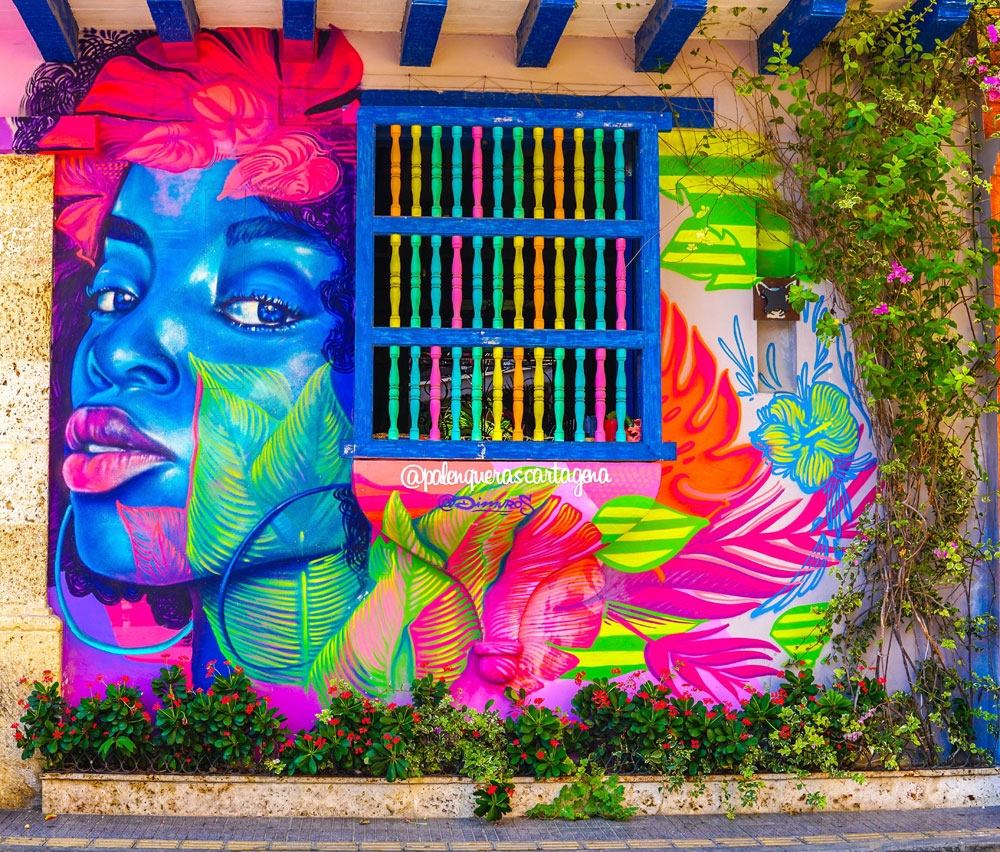
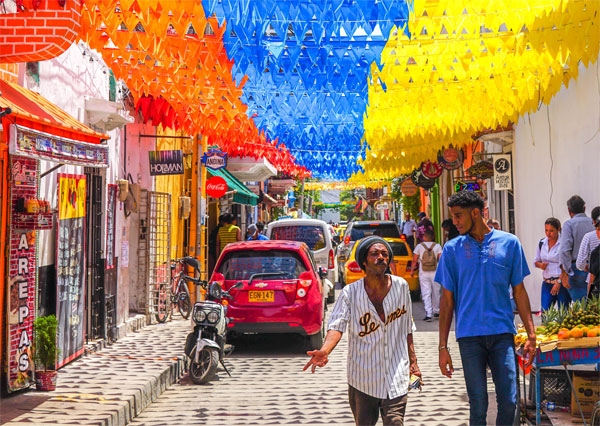

Old City charm
Back on the mainland, the heart of Cartagena is the Old City, enclosed by seven miles of impregnable stone walls built in the 16th century to protect the city from gold-hungry pirates. The touristy district of El Centro is a riot of colour and I don’t know where to look first: there are old colonial houses painted salmon pink and lemon yellow, raspberry-red restaurants and crimson-coloured bars, grocery stores emboldened in forest green with icing-white balconies smothered in kaleidoscopic bougainvillea. Not forgetting the brightly dressed Palenqueras, Cartagena’s renowned Afro-Caribbean women who pose for photos with huge bowls of exotic fruit balanced on their heads.
In San Diego, the slightly more bohemian barrio in the northeast corner of the Old City, grand colonial churches reside on sleepy corners and shady plazas play host to impromptu fandango performances while horses and carts clip-clop by. My favourite stop was the sun dappled Plaza San Diego square, where lively bars spill out onto cobblestone streets and lush trees squawk with tropical birds.
Unesco endorsement
Cartagena has always been colourful – its proximity to the Caribbean and role as Spain’s largest overseas trade port during the 16th century ensured nothing less. But it was receiving Unesco World Heritage status in 1984 for its aforementioned fortifications (the most extensive in South America, no less) that prompted locals to “dress the city for tourism”, says our tour guide Fernando, who specialises in excursions for VIP clients with destination management company Galavanta. Locals began painting their homes all the colours of the rainbow – with unconventional hues of ocean blue, hot pink and mint green emerging among the more traditional reds, yellows and whites – and by the 21st century, nearly 70% of houses had been restored.
The Unesco listing also helped secure the city’s place on the tourist map, designating it as distinct from the drug cartel-rife cities of Medellín and Bogotá. Foreign visitor numbers have been rising steadily ever since, with a record 510,000 arriving in 2018. As a result, there’s never been a better offering of high-end hotels, restaurants and bars.
Properties such as Blue Apple Beach House, Conrad Cartagena, Tcherassi Hotel & Spa, and Townhouse Boutique Hotel (which also has an excellent rooftop for sunset cocktails) have all cropped up in the past few years, joining long-standing favourites such as Sofitel Legend Santa Clara, a 17th-century converted monastery with butler service and the Old Town’s largest pool. Farther afield, Corocora Camp, a new luxury tented camp in the wetland savannahs of Los Llanos – a four-hour drive from Cartagena – showcases the excellent twin-centre opportunities on offer.

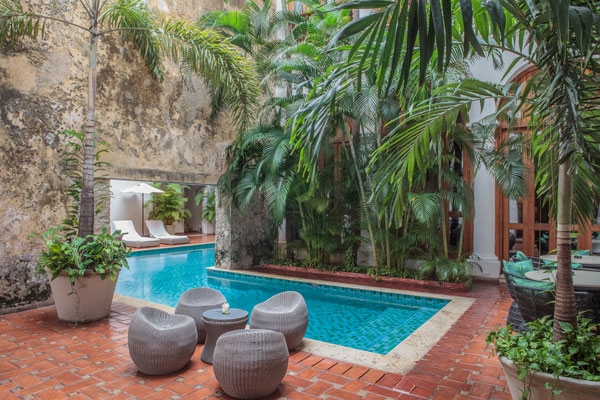
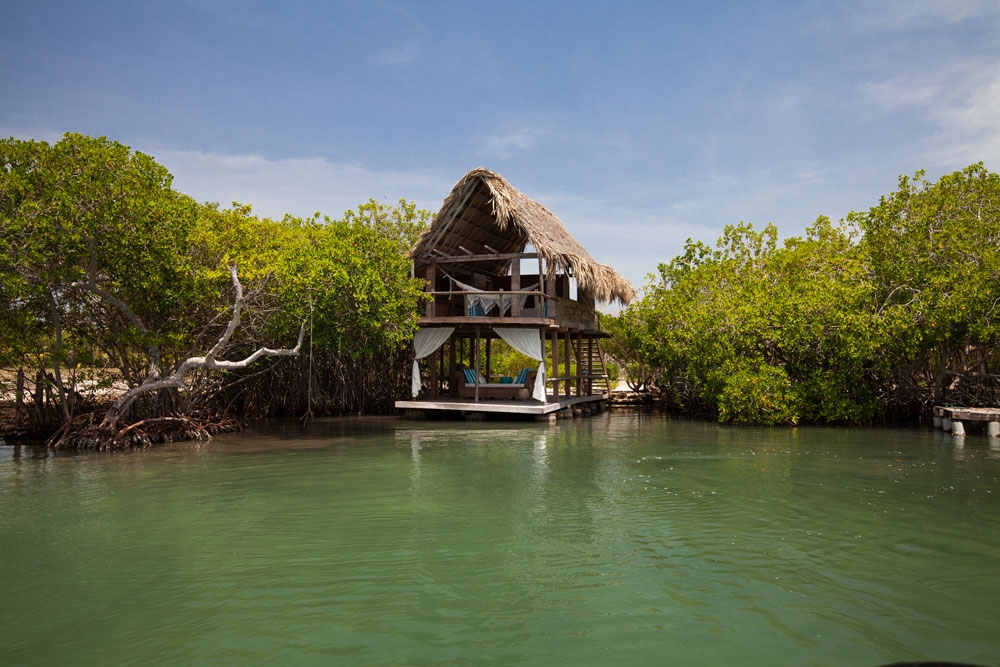
Historical highs
But while an expanding luxury scene is certainly making Cartagena more enticing, the city’s true charm still lies in its well-preserved past. Remnants of its lively history as a wealthy trading port abound. Close to Casa San Agustin lies the mustard and white Cathedral of Cartagena de Indias, one of the oldest Episcopal churches in the Americas, which was attacked by English privateer Francis Drake during construction in the 16th century.
Other historical standouts include beautiful clock tower Puerta del Reloj – the original entrance of the fortified city – and Plaza de San Pedro Claver and its church, built in honour of the patron saint of slaves.
But perhaps the most authentic lens into Cartagena’s past is the barrio of Getsemani, a five-minute walk from El Centro. While much of the Old City has become gentrified, this up-and-coming neighbourhood retains its grittiness and is one of the last slices of proper local culture. Formerly reserved for merchants and workers, Getsemani used to be a ghetto, rife with crime, drugs and prostitution. Today, it’s a hipster hotspot packed with cool bars, lively hostels and striking street art, the latter exploding onto walls in 2013 as part of an initiative to help transform the area. Head to Calle de la Sierpe for the largest concentration of murals, and the neighbourhood’s lively epicentre Plaza Trinidad, where locals play dominoes with cold beers after work and children snack on grilled arepas from stalls.
Getsemani couldn’t feel further from the white shores of Acasi, but that’s precisely Cartagena’s pull. Whether it’s high-end hotels or rustic guesthouses, palm-fringed beaches or bustling city streets, the best of both worlds can truly be enjoyed in this mesmerising city.
Book it: Journey Latin America offers a four-night stay at Casa San Agustin from £1,960. The price includes flights with Avianca from Heathrow via Bogotá, private transfers, excursions and breakfast daily.
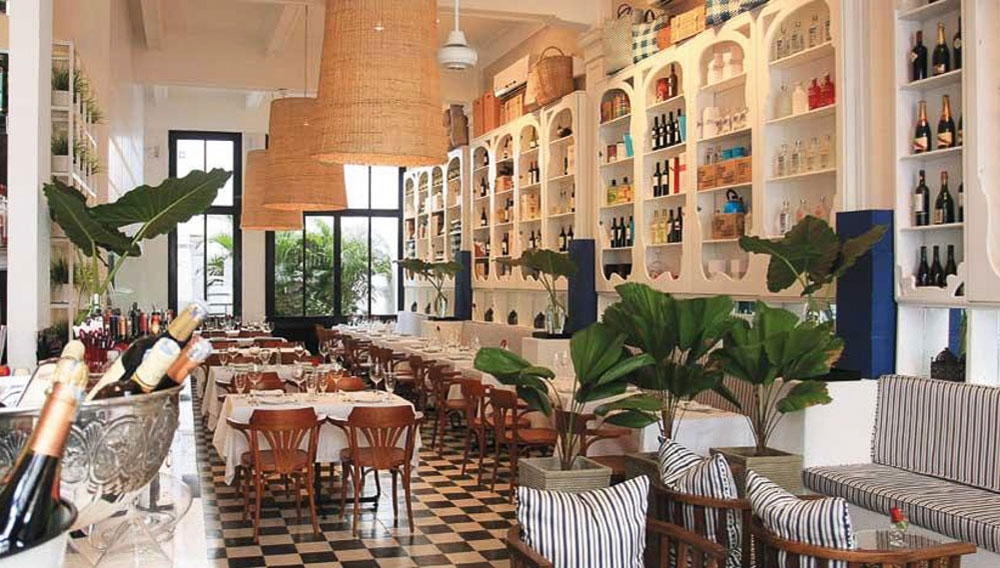


Food and drink
Cartagena’s food and drink scene is having a moment. Check out these spots to see for yourself.
Dona Lola
One of the newest restaurants in Getsemani, this uber-cool eatery located within colonial-style Hotel Lola is a feat of interior design as much as food. Dishes include crab claws, shrimp empanadas and frittata paired with a rich tomato and garlic sauce.
El Baron
Located in the heart of El Centro this place delivers a rum tasting experience like no other. Founder Noah will take guests on a historical tour of one of the world’s oldest alcohols, before helping them to distil their own. For the full Colombian experience, recommend clients head to one of Cartagena’s many salsa bars for a lesson afterwards – the Dutch courage will work wonders.
Don Juan
This chic eatery in Centro is widely regarded as one of the top restaurants in the city. Head here for sharing plates such as pork belly spring roll, grilled lobster tail and the best fish tacos with homemade slaw.
Alma
Open to the public as well as hotel guests, Casa San Agustin’s restaurant has become a destination in its own right. Order the Coco Woods Ceviche – chunks of diced fish marinated in lemon, coconut milk, red onion, chilli and fresh coriander, elaborately served oozing from a coconut shell.
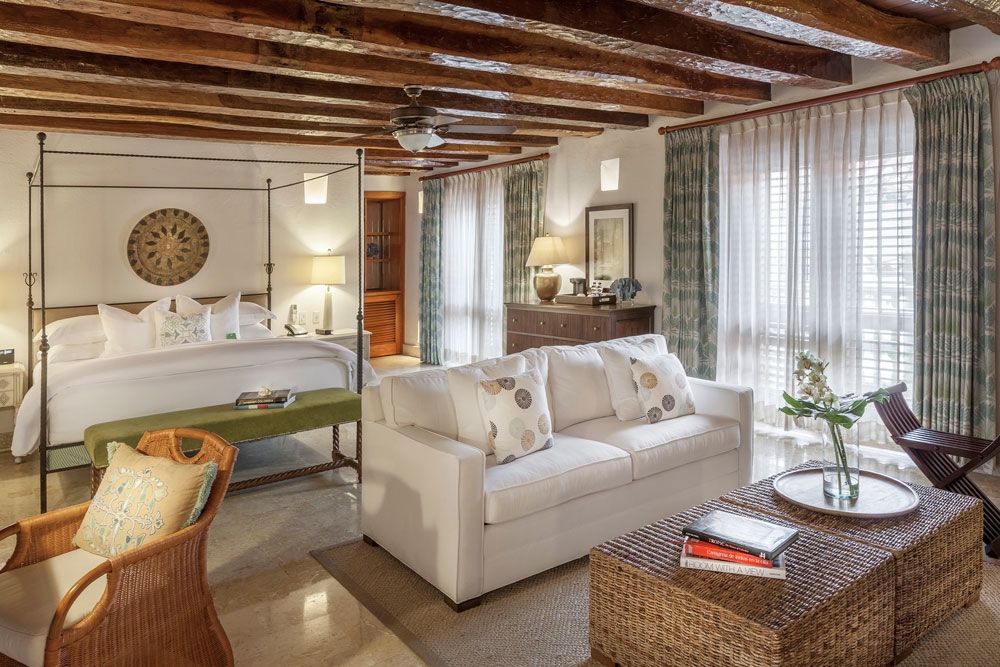

Casa San Agustin
City break boltholes don’t come more idyllic than Casa San Agustin. Opened six years ago in the heart of the Old City, this Leading Hotels of the World property is the perfect, palm frond-framed sanctuary to retreat to after a day’s exploring – and has oodles of history to boot. Its 20 rooms and 10 suites are spread across three restored 17th-century buildings, formerly the residences of a wealthy Colombian family and, later, a gin distillery and an aqueduct. Remnants of the property’s previous lives can be seen throughout, from the original arched wall that formed part of the aqueduct cutting across the pool to wood-beamed ceilings, Moorish-tiled bathrooms and antique frescoes.

